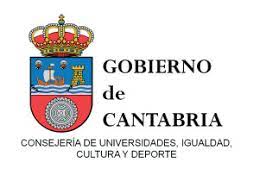Novel and theater: insertion of dramatized fragments in the narrative discourse. Three examples of Gonzalo Torrente Ballester
DOI:
https://doi.org/10.55422/bbmp.785Keywords:
Novle-teather relation, Novel Theory, Contemporary Spanish Novel, Gonzalo Torrente BallesterAbstract
In this paper I deal with the insertion of dramatized fragments inside the narrative text, a resource that Gonzalo Torrente Ballester uses in some of his novels. My hypothesis is that it is a not strange procedure in a genre like the novelistic one, being characterized by its capacity to assimilate all the discourses around it. In the second part of the paper I analyze its use in three novels by Torrente which belong to different periods and styles and I conclude that in all three cases the inserted theatrical fragments reproduce the stylistic features of the respective novels, all three are fully integrated into their structural design and duplicate the thematic core of their arguments.
Downloads
Publication Facts
Reviewer profiles N/A
Author statements
Indexed in
- Academic society
- Sociedad Menéndez Pelayo
- Publisher
- Sociedad Menéndez Pelayo
Global Statistics ℹ️
|
231
Views
|
164
Downloads
|
|
395
Total
|
|
References
BAJTIN, MIJAIL (1989). Teoría y estética de la novela, Madrid: Taurus.
GIL GONZÁLEZ, Antonio (2001a). Teoría y crítica de la metaficción en la novela española contemporánea. A propósito de Álvaro Cunqueiro y Gonzalo Torrente Ballester. Salamanca. Universidad de Salamanca.
GIL GONZÁLEZ, Antonio (2001b). “Imagino que cuento; cuento que imagino. Una lectura autorreferencial de la narrativa de Gonzalo Torrente Ballester” en Con Torrente en Ferrol…Un poco después, J.A. Ponte Far y J.A. Fernández Roca (eds.). Coruña. Servicio de Publicacions da Universidade da Coruña. 45-74.
GÓMEZ OTERO, Mª Azucena (2001). “La novela metafictiva: Yo no soy yo, evidentemente”, Con Torrente en Ferrol…Un poco después, J.A. Ponte Far y J.A. Fernández Roca (eds.). Coruña. Servicio de Publicacions da Universidade da Coruña. 351-386.
LOUREIRO, Ángel G. (1990). Mentira y seducción. La trilogía fantástica de Gonzalo Torrente Ballester. Madrid. Castalia.
LOUREIRO, Ángel G. (1997). “Torrente Ballester, novelista postmoderno” en La creación literaria de Gonzalo Torrente Ballester. A. Abuín, C. Becerra y A. Candelas (coords.). Vigo. Editorial Tambre. 1997. 61-76.
RUIZ BAÑOS, Sagrario (1992). Itinerarios de la ficción en Gonzalo Torrente Ballester. Murcia. Universidad de Murcia.
SINOPOLI, Franca (2002). “Más allá del género: la desnaturalización de la función convencional en el caso de la forma ‘hiper-novela’” en A. Gnisci (ed.). Introducción a la literatura comparada. Barcelona. Crítica. 188-195.
TORRENTE BALLESTER, Gonzalo (1977a). El golpe de estado de Guadalupe Limón” en Obra Completa. Tomo I. Barcelona. Destino. 561-848.
¬¬¬¬¬¬¬¬¬¬¬¬¬¬¬¬¬ TORRENTE BALLESTER, Gonzalo (1977b). “Introducción” a El golpe de estado de Guadalupe Limón” en Obra Completa. Tomo I. Barcelona. Destino. 555-559.
TORRENTE BALLESTER, Gonzalo (1987). Yo no soy yo, evidentemente. Barcelona. Plaza y Janés.
TORRENTE BALLESTER, Gonzalo (2002). La saga/fuga de J.B. Barcelona. Destino (Edición especial 30 aniversario).
WAUGH, Patricia (2001). Metafiction. The theory and practice of self-concious fiction. Oxford. Routledge.
Downloads
Published
How to Cite
Issue
Section
License

This work is licensed under a Creative Commons Attribution-NonCommercial 4.0 International License.







